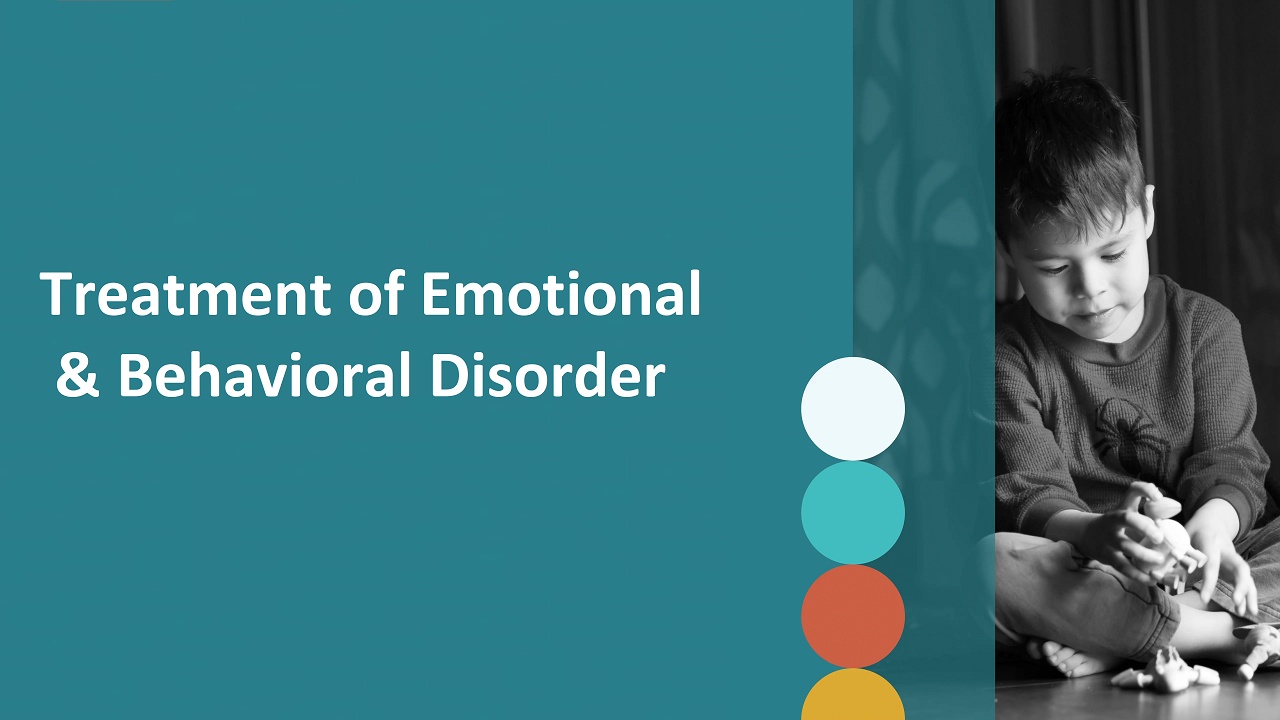Treatment of Emotional and Behavioral Disorders 2025

Emotional and behavioral disorders (EBD) affect millions of children, teens, and adults worldwide. These conditions can disrupt daily life, strain relationships, and hinder personal growth. The good news is that treatment options are available and effective when applied consistently. This article explores what emotional and behavioral disorders are, their common symptoms, and the wide range of treatments available. We will cover therapy, medication, lifestyle strategies, and practical tools for families and caregivers. You will also find answers to common questions at the end, along with a conclusion to tie it all together.
Read More: Verbal and Nonverbal Communication
Disclaimer: This article is for educational purposes only. It is not intended to replace professional medical or psychological advice. If you or someone you know is struggling with an emotional or behavioral disorder, please consult a qualified healthcare provider.
What Are Emotional and Behavioral Disorders
Emotional and behavioral disorders refer to a wide range of mental health challenges that affect how a person thinks, feels, and behaves. They can show up as intense emotions, disruptive actions, or difficulty managing stress. These disorders are not just “bad behavior” or mood swings. They are real conditions that need understanding and proper care.
Children with EBD may struggle in school, avoid social interaction, or display aggression. Adults might experience chronic anxiety, depression, or difficulties managing relationships. These challenges often impact learning, work, and family life.
Common Types of Emotional and Behavioral Disorders
Let’s look at some of the most recognized types:
1. Anxiety Disorders
Excessive worry, fear, or panic attacks that interfere with daily functioning.
2. Mood Disorders
Conditions like depression or bipolar disorder, where mood shifts affect emotions and energy.
3. Attention Deficit Hyperactivity Disorder (ADHD)
Trouble focusing, restlessness, and impulsivity that impact school or work.
4. Oppositional Defiant Disorder (ODD)
Frequent defiance, hostility toward authority, and difficulty following rules.
5. Conduct Disorder
More severe than ODD, often involving aggression, dishonesty, or rule-breaking.
6. Post Traumatic Stress Disorder (PTSD)
Ongoing distress after a traumatic experience, with flashbacks or avoidance behaviors.
7. Eating Disorders
Issues such as anorexia, bulimia, or binge eating affect both body and mind.
Causes and Risk Factors
Emotional and behavioral disorders usually don’t come from a single cause. Instead, they result from a mix of genetic, environmental, and social factors:
- Genetics: A family history of mental health issues can increase risk.
- Trauma: Abuse, neglect, or exposure to violence can trigger EBD.
- Biological factors: Brain chemistry and developmental issues play a role.
- Environment: Stressful home or school settings may worsen symptoms.
- Substance use: Drugs or alcohol can contribute to or worsen disorders.
Think of it as a puzzle with many pieces fitting together to shape a person’s mental health.
Signs and Symptoms
While every disorder looks different, some common signs include:
- Intense sadness or irritability
- Frequent temper outbursts
- Trouble following rules or instructions
- Avoidance of social situations
- Lack of focus or concentration
- Risky or impulsive behavior
- Withdrawal from family or friends
If these behaviors last for weeks or months and interfere with daily life, professional help is often needed.
Why Early Treatment Matters
Imagine a small fire left unattended. Over time, it spreads and becomes harder to control. Emotional and behavioral disorders work the same way. Early intervention gives people the tools to cope before problems escalate. It improves school performance, strengthens family relationships, and increases the chances of long-term recovery.
Treatment Approaches
Treating emotional and behavioral disorders often requires a combination of therapies, support systems, and lifestyle changes. Let’s break them down.
1. Psychotherapy
Also known as talk therapy, psychotherapy is one of the most effective tools.
- Cognitive Behavioral Therapy (CBT): Helps people identify negative thoughts and replace them with healthier ones.
- Dialectical Behavior Therapy (DBT): Teaches skills for managing intense emotions and improving relationships.
- Family Therapy: Focuses on improving communication and reducing conflict at home.
- Play Therapy: Especially useful for children who struggle to express themselves in words.
Think of therapy as mental exercise. Just like working out at the gym strengthens muscles, therapy strengthens emotional resilience.
2. Medication
In some cases, doctors prescribe medication to balance brain chemicals. These might include:
- Antidepressants for depression and anxiety
- Stimulants for ADHD
- Mood stabilizers for bipolar disorder
- Antipsychotics for severe aggression or psychosis
Medication is not a cure, but it can reduce symptoms so therapy and lifestyle changes are more effective.
3. School and Workplace Support
Children with EBD often benefit from individualized education programs (IEPs) or 504 plans. These adjustments might include extra time on tests, counseling support, or behavior management strategies.
Adults may need workplace accommodations such as flexible schedules or access to mental health resources.
4. Lifestyle and Self-Care
Simple lifestyle changes can make a huge difference:
- Healthy diet: Balanced nutrition supports brain health.
- Regular exercise: Physical activity reduces stress and boosts mood.
- Sleep hygiene: A consistent sleep routine improves focus and energy.
- Mindfulness practices: Breathing exercises, meditation, and journaling help calm the mind.
These daily habits are like the foundation of a house. Without them, other treatments may not hold up as well.
5. Support Groups and Community Programs
Sometimes, the best comfort comes from talking to people who truly understand. Support groups provide encouragement, reduce isolation, and offer real-life strategies for coping. Community programs may also provide job training, housing assistance, or social skills development.
6. Crisis Intervention
For severe cases, such as suicidal thoughts or violent behavior, immediate help is critical. This might include hospitalization, emergency counseling, or intensive outpatient programs. Crisis intervention stabilizes the situation and creates a safe space for long-term recovery to begin.
Role of Families and Caregivers
When someone struggles with an emotional or behavioral disorder, the whole family feels it. Caregivers play a vital role in recovery. They can:
- Learn about the disorder to better understand behaviors
- Practice patience and empathy
- Create a structured and supportive environment
- Encourage treatment and celebrate small victories
A supportive family acts like a safety net, catching a loved one when they stumble.
Challenges in Treatment
While treatments are effective, they are not without challenges:
- Stigma around mental health may prevent people from seeking help
- Access to care is limited in some areas
- Medications may have side effects
- Therapy takes time and commitment
Despite these hurdles, recovery is possible with persistence and the right support.
Long Term Outlook
With treatment, many people with emotional and behavioral disorders go on to lead fulfilling lives. Progress may not be linear, and setbacks are normal, but steady improvements are common. The key is consistency, patience, and a willingness to adapt.
Frequently Asked Questions
1. Can emotional and behavioral disorders be cured
Not always. Many are long-term conditions, but with proper treatment, symptoms can be managed effectively.
2. How do I know if my child needs professional help
If behaviors interfere with school, relationships, or daily routines for more than a few weeks, it’s wise to seek an evaluation.
3. Do medications make people dependent
Most medications for EBD are not addictive. They are carefully monitored by doctors to ensure safe use.
4. Is therapy alone enough
For some people, yes. Others may need a combination of therapy, medication, and lifestyle changes.
5. What should I do in a crisis
If someone is in danger of harming themselves or others, call emergency services immediately. Crisis hotlines are also available 24/7.
Conclusion
Emotional and behavioral disorders are real challenges, but they are not life sentences. With early detection, proper treatment, and strong support, individuals can thrive. Therapy, medication, lifestyle habits, and community resources all work together to create a path toward healing. If you or someone you love is struggling, know that help is out there and recovery is possible. Taking that first step toward treatment might feel overwhelming, but it is also the most powerful step toward a better future.



